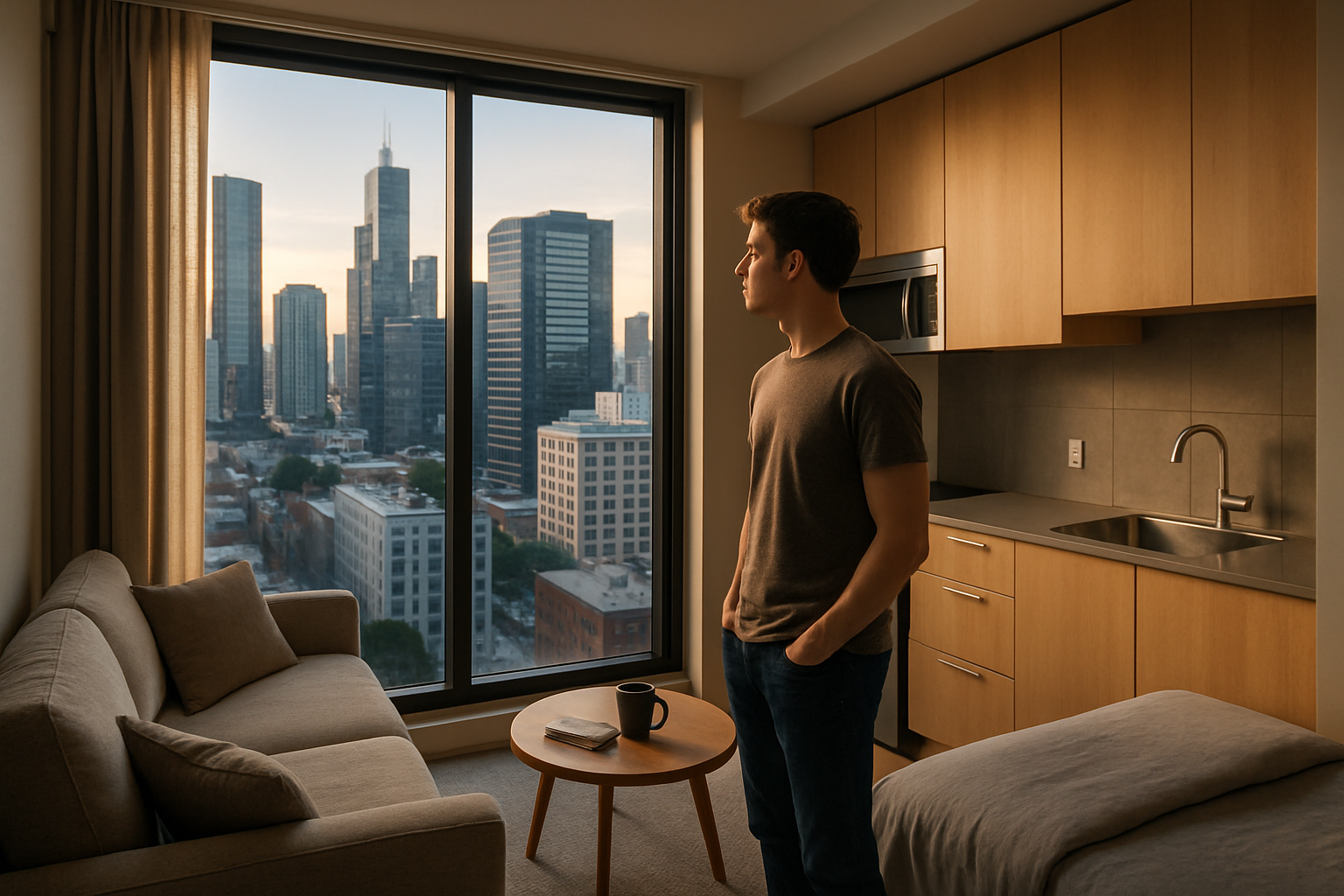Micro-Apartments: The Next Big Thing in Urban Real Estate
In a world where city living is becoming increasingly expensive and space is at a premium, a new trend is emerging in the real estate market: micro-apartments. These compact living spaces, typically ranging from 150 to 400 square feet, are reshaping urban housing landscapes and challenging traditional notions of what constitutes a home. As property prices soar and urban populations grow, micro-apartments offer a solution that's both innovative and practical, appealing to a diverse range of city dwellers from young professionals to retirees looking to downsize.

These tiny homes are designed to maximize every square inch of space. Innovative storage solutions, multifunctional furniture, and clever design tricks create the illusion of more space. For instance, Murphy beds that fold into the wall, dining tables that double as work desks, and kitchens concealed behind sliding panels are common features in these compact dwellings.
Economic Drivers Behind the Trend
The micro-apartment trend is largely driven by economic factors. In many urban centers, traditional apartments have become unaffordable for a significant portion of the population. According to recent data, in cities like San Francisco and New York, the average rent for a one-bedroom apartment often exceeds 50% of the median income, far above the recommended 30% threshold for housing costs.
Micro-apartments offer a more affordable entry point into desirable neighborhoods. They typically rent for 20-30% less than conventional studios in the same area, making them an attractive option for those who prioritize location over space. This affordability factor is particularly appealing to millennials and Gen Z professionals who are often burdened with student debt and prefer to allocate their income towards experiences rather than large living spaces.
Target Demographics and Market Potential
While initially popular among young, single professionals, the appeal of micro-apartments is broadening. Empty nesters looking to downsize, frequent travelers seeking a pied-à-terre, and even small families are now considering these compact living spaces. This diverse demand is driving developers to create a range of micro-apartment styles, from basic units to high-end, amenity-rich complexes.
The market potential for micro-apartments is significant. Urban population growth shows no signs of slowing, with the United Nations projecting that 68% of the world’s population will live in urban areas by 2050. This urbanization trend, coupled with the growing acceptance of minimalist lifestyles, suggests that the demand for micro-apartments will continue to rise.
Design Innovations and Amenities
Architects and designers are rising to the challenge of creating livable, appealing spaces within tight constraints. High ceilings, large windows, and light color palettes are used to create a sense of openness. Some developments are incorporating smart home technology, allowing residents to control lighting, temperature, and even furniture configuration via smartphone apps.
To compensate for the lack of personal space, many micro-apartment complexes offer extensive communal amenities. Shared lounges, rooftop gardens, co-working spaces, and fitness centers are becoming standard features. These communal areas not only provide additional living space but also foster a sense of community among residents.
Regulatory Challenges and Urban Planning Implications
The micro-apartment trend is not without its challenges. Many cities have minimum size requirements for residential units, which can impede the development of these small spaces. For instance, in New York City, apartments traditionally had to be at least 400 square feet, though recent zoning changes have allowed for smaller units in certain areas.
Urban planners and policymakers are grappling with the implications of micro-apartments on city infrastructure and quality of life. While these units can increase housing density and potentially ease housing shortages, there are concerns about overcrowding and the long-term livability of such small spaces.
Investment Potential and Market Outlook
For real estate investors, micro-apartments present an intriguing opportunity. The higher price per square foot compared to traditional apartments can translate to better returns, especially in high-demand urban areas. Additionally, the flexibility of these units - which can easily transition from rental properties to short-term stays or even hotel-like accommodations - offers multiple revenue streams.
However, investors should be aware of potential risks. The novelty of micro-apartments means that their long-term market performance is still uncertain. There’s also the question of how these units will fare in economic downturns or shifts in housing preferences.
The Future of Urban Living
As cities continue to grow and evolve, micro-apartments are likely to play an increasingly important role in urban housing markets. They represent a creative solution to the challenges of affordability and space constraints in densely populated areas. While they may not be suitable for everyone, their growing popularity suggests that they are more than just a passing trend.
The success of micro-apartments could lead to broader changes in urban development and lifestyle choices. We may see a shift towards more compact, efficient living spaces across various housing types, influencing everything from furniture design to urban planning policies.
In conclusion, micro-apartments are reshaping the landscape of urban real estate. They offer a unique blend of affordability, location, and innovative design that appeals to a growing segment of city dwellers. As this trend continues to evolve, it will be fascinating to see how it transforms our cities and our concepts of home in the years to come.





